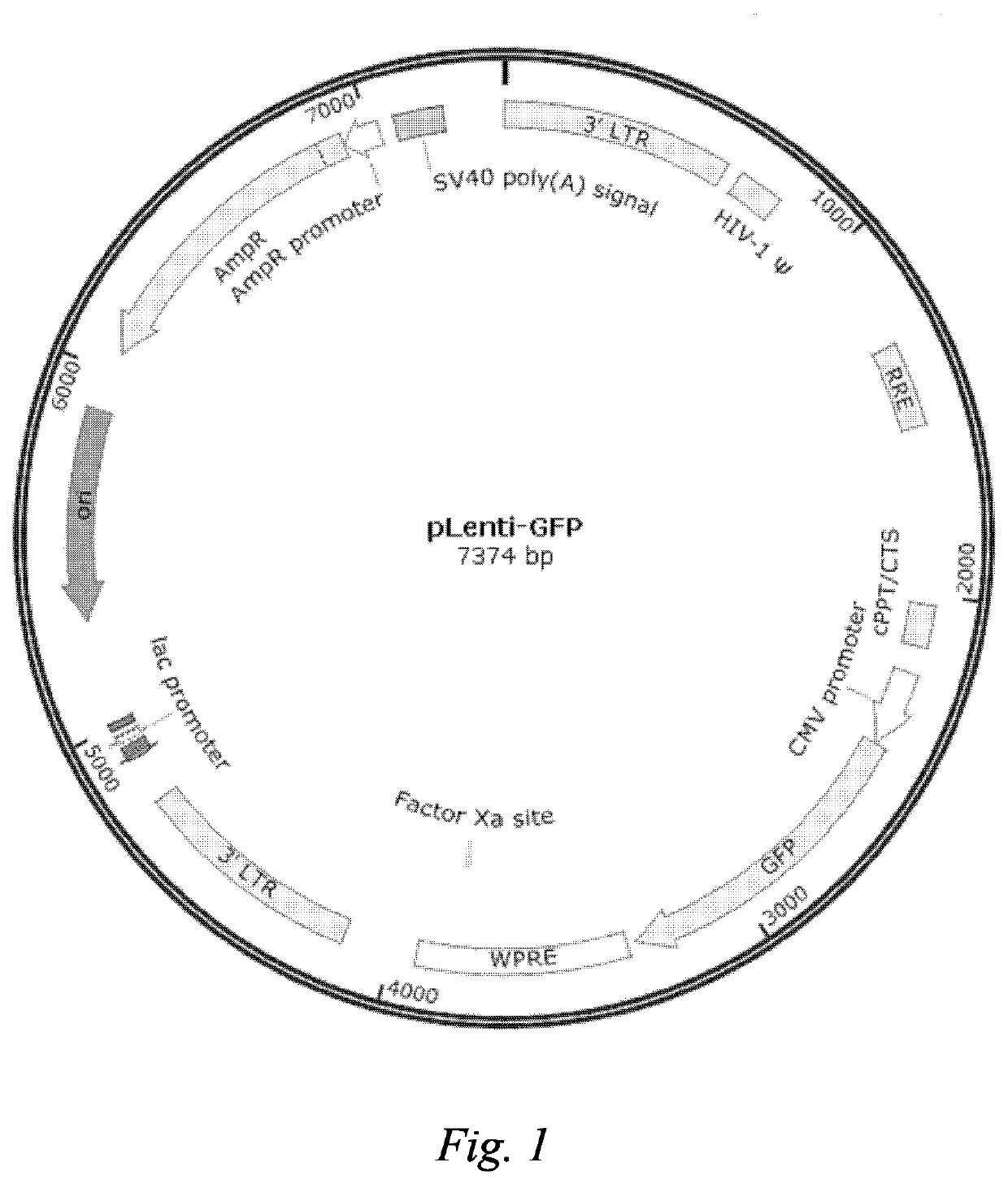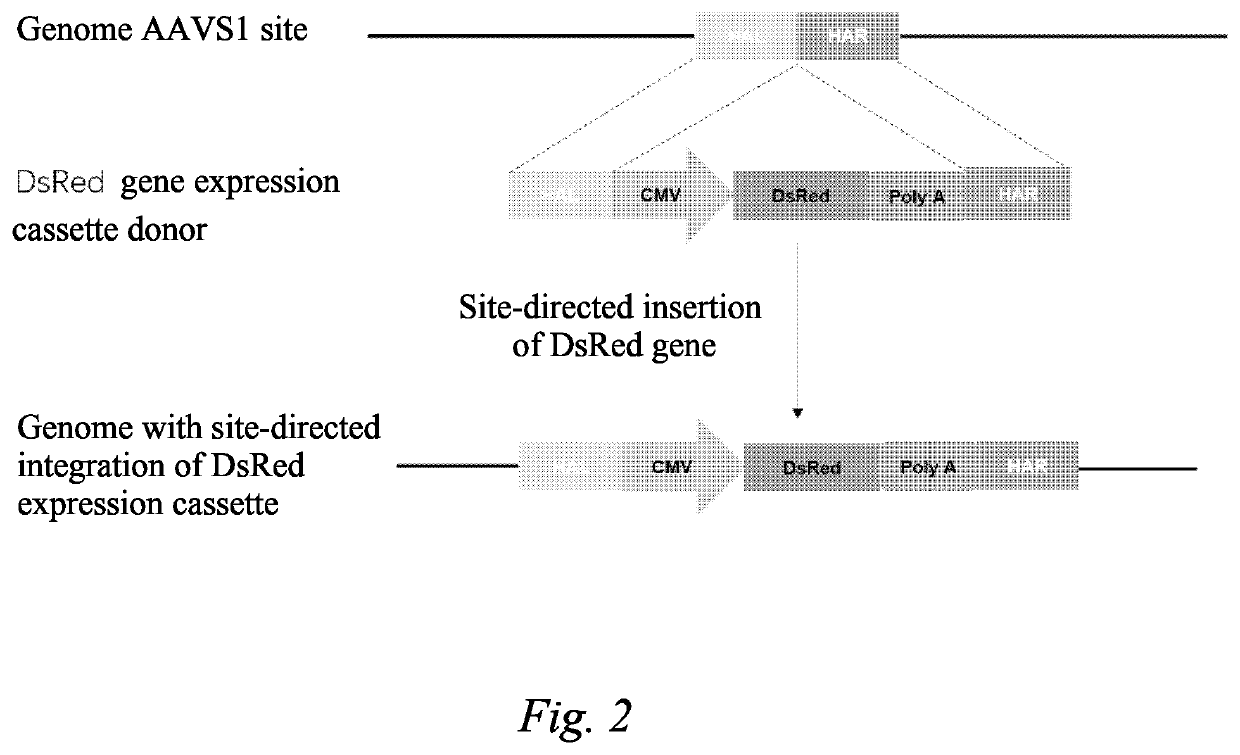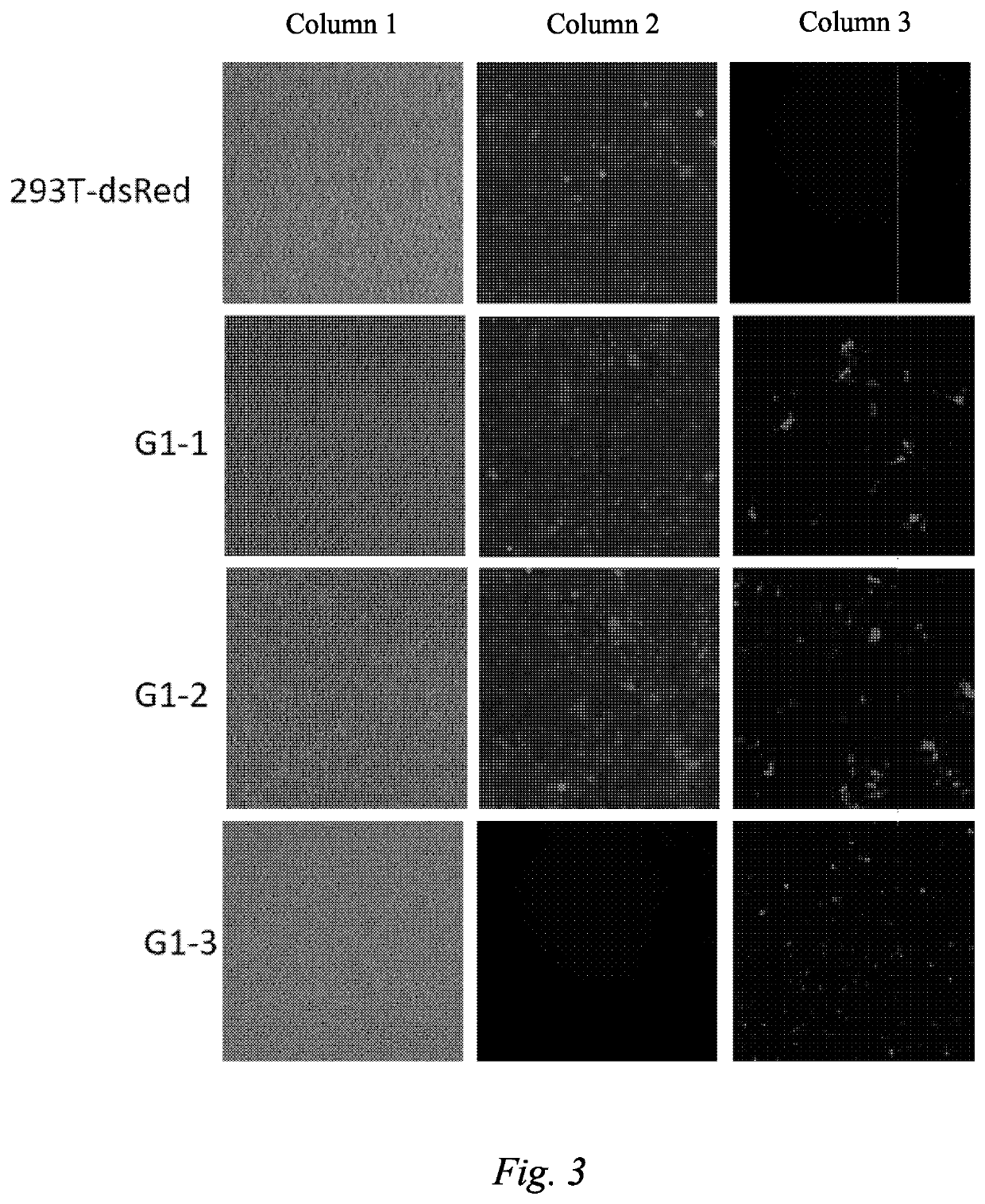Method For Delivering Gene In Cells
a technology of gene and cell, applied in the direction of antibody medical ingredients, drug compositions, viruses/bacteriophages, etc., can solve the problem that the effect of t cells will not be as significant, and achieve the effects of promoting tumor growth, enhancing drug efficacy, and broadening the scope of utility
- Summary
- Abstract
- Description
- Claims
- Application Information
AI Technical Summary
Benefits of technology
Problems solved by technology
Method used
Image
Examples
example 1
l Particles Packaged and Released by Immune T Cells Complete the Intercellular Delivery of Protein Tags
[0125]1. Experimental Design and Results:
[0126]1.1. Experimental Design
[0127]In this example, donor and receptor cells were selected, the donor cells were processed to make same able to produce a virus that delivers the green fluorescent protein (GFP) gene; by means of detecting whether the receptor cells express green fluorescent protein, virus infection was confirmed and material delivery in the form of a virus between cells was verified.
[0128]1.2. Experimental Method
[0129]Step (1) Construction of a Receptor 293T-dsRed Cell Line:
[0130]a) construction of an sgRNA and Cas9 co-expression vector: DNA sequences SEQ ID No: 1 and SEQ ID NO: 2) were synthesized, two DNA strands were phosphorylated (NEB: M0201S) and annealed to form a double strand, a px330 vector (Addgene, #42230) was digested with BbsI (NEB: R3539S), and the digested product was recovered with a gel recovery kit (Qiagen...
example 2
l Particles Packaged and Released by Immune T Cells can Complete the Intercellular Delivery of a Gene Editing System
[0149]Donor and receptor cells were selected, after the donor cells were processed to make same able to produce viruses for the delivery of a gene editing material (sgRNA), and the intercellular delivery of the gene editing system was verified by detecting the gene editing in a 293T receptor cell containing a Cas9 gene.
[0150]1. Experimental Method
[0151]Step (1) Preparation of Receptor Cells
[0152]Construction of a 293T-Cas9 cell line: A LentiCRISPRv2 plasmid (Addgene, 52961; see FIG. 10 for the plasmid map) was delivered to a 293T cell using liposome lipofectamine 3000 (Thermo: L3000001). After 48 hours of transfection, puromycin (Thermo Fisher, A11138-03) was added, and the cells were screened at a final concentration of 1 μg / mL and subjected to expanded culture. The cell population screened via puromycin was digested with trypsin into single cells and counted. A flow ...
example 3
l Particles Packaged and Released by Immune T Cells Complete the Delivery of a Surface Antigen
[0167]1. Experimental Design and Method
[0168]1.1 Experimental Design
[0169]In this example, donor and receptor cells were selected, and the donor cells were processed to make same able to produce viruses that deliver a cell surface antigen (in this example, CD19 is taken as an example). Intercellular material delivery in which viruses are taken as media was confirmed by means of detecting whether the receptor cells express the surface antigen.
[0170]1.2 Experimental Method
[0171]Step (1) Construction of a Receptor 293T-dsRed Cell Line: The Same as Step (1) of Example 1
[0172]Step (2) Construction of a Lentiviral Expression Plasmid:
[0173]A Plasmid, pELPs (sequence refers to GenBank ID MP123113.1), was obtained using a complete synthesis method. The synthesized CD19 sequence is as shown in GenBank ID BC006338.2 (45-1715). The CD19 was ligated downstream of the EF-1α promoter in pELPs to obtain th...
PUM
| Property | Measurement | Unit |
|---|---|---|
| wavelength range | aaaaa | aaaaa |
| volume | aaaaa | aaaaa |
| concentration | aaaaa | aaaaa |
Abstract
Description
Claims
Application Information
 Login to View More
Login to View More - R&D
- Intellectual Property
- Life Sciences
- Materials
- Tech Scout
- Unparalleled Data Quality
- Higher Quality Content
- 60% Fewer Hallucinations
Browse by: Latest US Patents, China's latest patents, Technical Efficacy Thesaurus, Application Domain, Technology Topic, Popular Technical Reports.
© 2025 PatSnap. All rights reserved.Legal|Privacy policy|Modern Slavery Act Transparency Statement|Sitemap|About US| Contact US: help@patsnap.com



